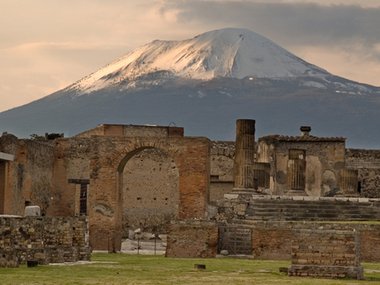Question Your World: What Can Ice Cores Tell Us about Human History?
Glacial ice cores are fascinating feats of human scientific and technological achievement. Mile-long cylindrical columns of layered ice, drilled out of the thickest parts of ice sheets from places like Greenland or Antarctica, these ice cores offer a highly detailed collection of environmental information. A recent study has determined the rise and fall of the Roman Empire by studying the ancient climate in ice cores. How cool is that? Ice cold, of course. This brings up today’s big question: What can ice cores tell us about human history?
Studying the atmosphere is not a new practice. In fact, studying ice cores has told us a lot of important information about what the Earth’s atmosphere was like in the past. For example, the air that is trapped in tiny bubbles in the ice has been used for decades to measure the amount of heat-trapping gases like carbon dioxide that existed in our atmosphere as far back as 2.7 million years ago. Spoiler alert: there’s more in our atmosphere today than back then!
Now, scientists have fingerprinted something else within the ancient ice from Greenland – a nearly year-by-year economic history of the rise and fall of the Roman Empire. Only thing is, this story isn’t written down in Latin or in numerals…instead, scientists were reading levels of lead pollution! As the Romans expanded and grew their empire, they needed more and more silver. After all, a growing empire needs more coins, weapons, household items, and so on. The Romans mined silver from surrounding areas and then processed the metal at high temperatures to make the needed items. This smelting process was a source of airborne lead. These lead particles in the atmosphere then stuck to falling snow that was subsequently deposited in layers in glacial ice. As the empire grew and prospered and the economy was healthy, the mining operations created periods of higher lead concentrations in the atmosphere. During times of hardship, the mining operations decreased and subsequently so did the lead emissions. The varying amounts of lead trapped in the ice can give us a peek at the empire’s prosperity, or lack thereof.
In 2018, the ice cores were studied and the lead levels observed. While lead levels are not a direct indicator of their GDP, they do seem to follow the ups and downs of the Roman Empire’s history. During times of peace, lead levels were seen to rise and during times of civil war or plagues, the levels dipped. So, to sum it up, Roman mining and extraction of silver used for coins and weaponry emitted lead particles into the atmosphere; these lead particles stuck to falling snow that built up in Greenland over several thousands of years. Here the annual cycles of ice melt and refreeze are recorded in layers like a stack of flapjacks, with the older stuff at the bottom.
Scientists can now analyze the ice for lead pollution and keep track of the economic goings-on of the Romans! Lead levels in the ice varied as the Romans founded and expanded their empire, fought major wars, and suffered from plagues, invasions and so on. Regardless, the human activity of mining silver ore and smelting it for practical use caused detectable amounts of lead to be added to the atmosphere.
This is just another way that the Earth has kept track of human history and shows once again how we have impacted the Earth system. Guess you can say studying the ancient climate really lead us to this discovery!


